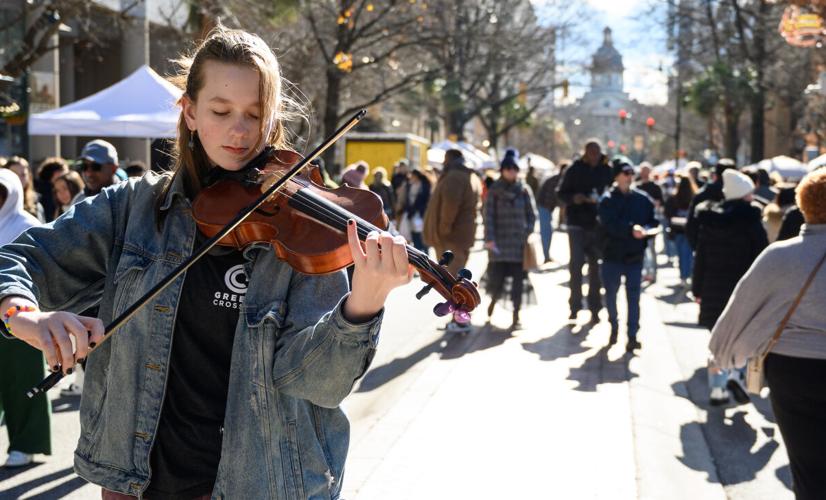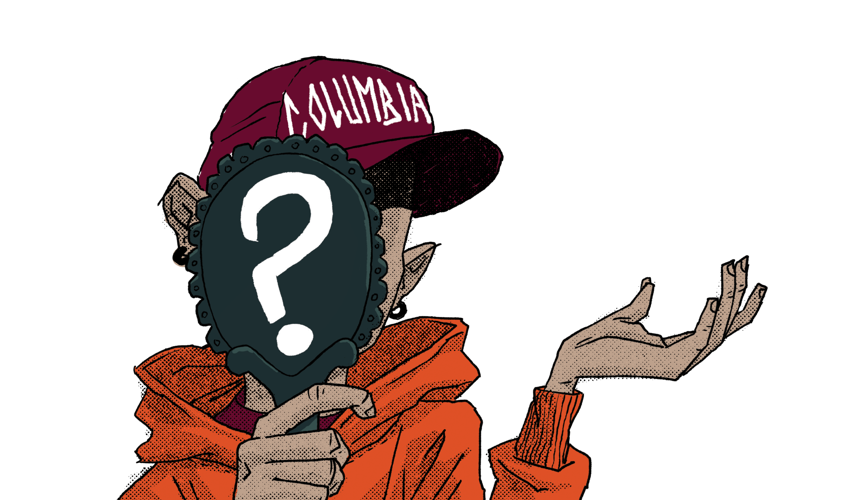Who are we? It’s a loaded question.
There’s a long pause. Sometimes, they repeat it out loud to themselves. An audible exhale or a look away as their mind turns.
These are just a few reactions to a question that’s anything but straightforward: What is Columbia’s identity?
It’s a question, for many, that can conjure up comparisons to other cities like Charleston and (Yeah, THAT) Greenville. It causes some hand-wringing and spit balling of trademark Columbia things: USC, the riverfront, being two hours from the mountains and the beach.
For a place so central on the state map, Columbia has struggled to define who it is. And the opinions on what shapes this place are as varied as the districts that dot its landscape.
The struggle to give Columbia an identity is evident in its taglines: “It’s Happening Now,” “Where Friendliness Flows,” Famously Hot” and “The Real Southern Hot Spot,” to name a few.
Much like those lines, the experiences that shape how people see Columbia — whether they live here or not — vary greatly. And they have changed over the years.
When asked, a few people with different backgrounds, careers and time spent in Columbia shared their thoughts. Each had their take, but one way or another, they all came around to saying the same thing.
It Isn’t Always Easy Here
Some say a creative life is not for the faint of heart in Columbia. Those plugged into the arts community lament the insufficient investment in their work — and no central location for creators to create.
"Because there's not a foundation to grow from, it's kind of always a straight line going up and down,” said Caitlin Bright, Director of Artfields Presents in Lake City. She’s been an integral part of Columbia’s art, leading both 701 Center for Contemporary Art and Tapp’s Arts Center.
Without space for artists to create their work, community develops in pockets, never fully coming together.
This sense of disjointedness has been pervasive throughout Columbia at times. Each district and part of the city has its own identity. In some ways, that’s an asset. In others, it indicates Columbia’s battle with how to tell people what it is.
Pair the region's slow growth (compared to its neighbors on either end of the state) and lack of unification can make it harder for visions to become reality. But just because it’s not easy doesn’t mean it’s not possible.
Not Everyone Will “Make It” in Columbia
The idea of “making it” means something different to everyone. Maybe it’s fame or money. A record deal or a gallery show. A company that sells for a small fortune.
It’s possible for some people here. They’ve built their dream. A few have lived in different cities, much larger than Columbia, but they came back and have made this place home. And it’s worked for them.
GiGi Hardin is one of those people. She came to Columbia to go to Benedict College. Then, she left. She lived in Charlotte, Brooklyn and Atlanta. Cities that pull people from Columbia. And rarely do they return.
But Hardin came back. She said she still had a lot of connections here and felt like it was a great place to start something. So, she created The Beautiful Neighborhood, a thrift store collective in Rosewood. She was welcomed back, and the community has supported her work.

A woman shops for fresh produce on Main Street at the weekly Soda City Market on Saturday, Dec. 30, 2023
"If you're creative and have creative ideas and support others, you'll see this scene has a lot of potential,” Hardin said.
That’s not the story for everyone. Columbia isn’t the place where every dream can be fulfilled. Those people leave. Some may come back, but many won’t.
Rand Courtney is one of those people. He grew up in Lexington. He performed in productions and worked as an actor while living in Columbia. He said he realized there was only so much he could do in this city. If he wanted to make a run at the career he envisioned, he’d need to get out.
"The further along I got, I just realized it wasn't possible in Columbia,” Courtney said.
Courtney has lived in many big cities but settled 40 miles south of Los Angeles. He’s built a company and is living the dream he knew wasn’t possible in his hometown.
Good Happens Here
Hardin said there’s opportunity to make an impact: "I felt like I can make a difference because I have more support from others.”
That support gives rise to new events, groups and movements. They don’t always work out. But when they do, this is a place where they can grow.
Dan Cook, former editor of the Free Times, had a few examples that are now household names in Columbia, like St. Pat’s in Five Points, which was started by a few local business owners.
Or Soda City Market, a trademark of the city’s weekend scene and a must-see for visitors.
"It's large enough for there to be a lot of things going on, but it's small enough for one person to make a difference,” Cook said. “And I've seen that time and time again. One person with a vision, who's persistent, can get it done."
It’s often more than one person. The Statehouse grounds, right off Main and Gervais streets, are a gathering point for people who want to make their voices heard on issues they care about.

A young violinist busks on Main Street during Soda City Market on Saturday, Dec. 30, 2023
That could be a handful of people with signs. A civil rights march. Or 10,000 teachers who converged on Columbia from across the state.
Those kinds of things leave their mark on a place.
And it's not just places we look to for help figuring ourselves out. It's memories, too.
"Identity can come from our reframing of who we are based on our understandings of the past,” mused Robin Waites, Executive Director of Historic Columbia.
There’s Something About This City
Identities are easily misconstrued. Shaped by what others think and say about a place and the people who call it home.
But a city’s identity isn’t defined by taglines, hot takes or outdated assumptions. It’s defined by the people who call it home. Maybe it's home for four years. Maybe 40.
They’re the ones who get to have a say in what Columbia is.
"If you have something new you want to try, there's someone who will try it with you. And I love that about this city,” Hardin said.
Courtney said it’s taken him a while to reconcile his thoughts on Columbia and his home state. But, over time, he’s come to appreciate this place for what it is.

The Free Times 2024 Identity Issue: The hunt for Columbia's arts identity.
"Human beings from America have a lot they can learn from that state," he said. "I'm proud to be from South Carolina."
Even though more could be done to support the arts, it doesn’t mean Columbia is devoid of great work.
"There's more freedom of expression in Columbia, and that’s a liberating experience,” Bright said when reflecting on how Columbia differs from other creative places she’s lived, like Brooklyn.
It’s easy to criticize Columbia. To put it down or talk about what it doesn’t have. It’s much harder to do something about it. That would require getting invested in Columbia’s identity. To be woven into the fabric of it. But according to the people who’ve made the commitment, that’s what makes this city different. A lot of people won’t do it.
But if enough people, or even one person, decided they wanted to try to start something new, they have a pretty good shot of doing it here in Columbia.











